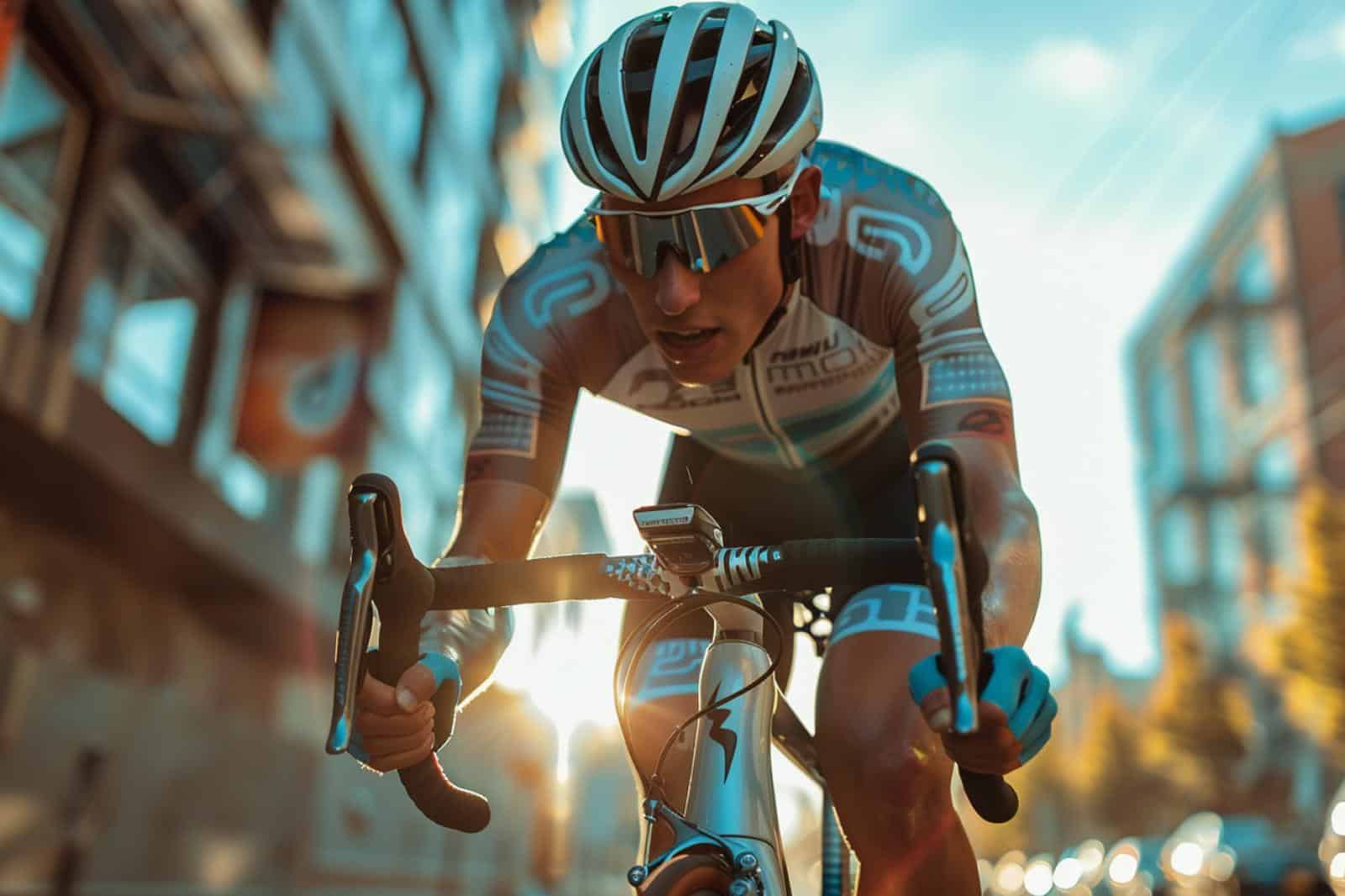How Do Professional Cyclists Optimize Aerodynamics in Time Trials?

In the world of competitive cycling, time is everything. Aerodynamics carries a significant role in the quest for speed and efficiency. Professional cyclists and their teams leave no stone unturned to shave off those vital seconds off the clock. The race against time is not just about the cyclist’s power and fitness but also about how they cut through the wind, resist drag, and maintain an optimal aerodynamic position. In this article, we’ll dive into the intriguing world of cycling aerodynamics and elucidate how professional riders optimize it in their time trials.
Harnessing the Power of Aerodynamics
Aerodynamics, in straightforward terms, is the study of how air moves around an object. In the context of cycling, it’s about how a rider and their bike can move through the air with the least resistance. Ignoring aerodynamics can be like trying to win a car race with the parking brake on — it’s an uphill battle.
Topic to read : What Are the Most Effective Recovery Techniques for Marathon Runners?
Professional cyclists look at the elements of drag, which is the force that resists the movement of the bike and the rider through the air. There are two primary forms of drag: pressure drag (caused by the air pressure difference between the front and back of the rider and bike) and frictional drag (caused by the friction between the air and the surfaces of the rider and bike).
Successful professional cyclists know how to minimize these drag forces to maintain a high speed during their time trials. They work in harmony with their bikes and the wind, rather than fighting against them.
Also read : What Are the Latest Innovations in Swimwear Technology for Competitive Swimming?
Mastery of the Aerodynamic Position
A critical aspect of cycling aerodynamics is the rider’s position on the bike. When you watch professional time trial riders, you’ll notice that they adopt a distinctive, streamlined position. This position is not coincidental; it’s the result of meticulous study and adaptation to enhance aero efficiency.
The rider’s body serves as the most extensive area that interacts with the wind. By adjusting their body position, riders can significantly decrease the drag and, consequently, increase their speed. The standard aerodynamic position involves bending the elbows, keeping the body low, and maintaining a flat back. This position reduces the frontal area, which is the area that directly faces the wind.
While the specific positions can vary among riders based on their body structure, comfort, and ride strategy, the underlying principle is to negotiate the least possible wind resistance. It’s a careful balance between maintaining an aerodynamic position and producing optimum power.
The Role of Bike Design and Equipment
The bike design and equipment can significantly influence the aerodynamics in time trials. The shape, weight, and material of the bike, along with the rider’s gear, can have substantial impacts on the speed and efficiency.
Time-trial bikes are distinct from regular road bikes. They have a more aerodynamic design, with a steeper seat tube angle, shorter wheelbase, and uniquely shaped handlebars. These features allow the cyclist to maintain an aggressive, aerodynamic position for extended periods.
The cyclist’s gear, including the helmet, suit, shoes, and even the water bottle, is also intricately designed to optimize aerodynamics. For instance, aero helmets are teardrop-shaped to reduce drag, while skinsuits are made from materials that minimize air friction.
Aerodynamics Beyond the Bike: Tactics and Environment
While the rider’s aerodynamic position and the bike’s design are undoubtedly crucial, professional cyclists also consider the broader environment. The wind direction, road conditions, and even the drafting strategies can impact aerodynamics.
Cyclists must adapt to the wind conditions. A headwind (wind coming from the front) requires a more aggressive aero position to cut through the wind, while a tailwind (wind coming from behind) allows the rider to relax their position slightly. Crosswinds can be challenging as it can push the rider sideways, affecting stability and speed.
Drafting is another tactical strategy used in group cycling events. It involves riding closely behind another cyclist to take advantage of their slipstream, reducing wind resistance and saving energy.
The Science of Cycling Aerodynamics
The optimization of aerodynamics in cycling is a continuously evolving field, backed by significant scientific research. Various studies have been conducted to analyze and improve cycling aerodynamics, often in controlled wind-tunnel environments.
A research journal published by MDPI in 2023 analyzed the aerodynamics of different cycling positions. The study found that even slight modifications in the elbow angle could lead to significant changes in the drag coefficient.
Another trial carried out by a leading sports institute analyzed how different helmet designs affect aerodynamics. It concluded that helmets with extended tails offer better aerodynamic benefits than short-tail or tailless designs.
Scientific research aids in demystifying the complexities of aerodynamics, providing data-backed insights and recommendations to professional cyclists and coaches. These findings help them fine-tune their strategies and equipment for optimal aerodynamic efficiency.
Cycling aerodynamics is not just about going with the wind; it’s a sophisticated blend of science, design, strategy, and skill. The next time you watch a professional cycling time trial, remember that there’s much more at play than just the rider’s power. It’s about mastering the art and science of aerodynamics to race against time effectively.
The Role of Technology in Optimizing Aerodynamics
Modern technology plays a significant role in helping cyclists and their teams optimize aerodynamics. From using cutting-edge materials to design bikes and gear, to leveraging sophisticated software for wind-tunnel simulations, technology has become an indispensable tool in the pursuit of aerodynamic perfection.
Bike manufacturers are continually seeking to develop lighter, stiffer, and more aerodynamic bikes. They make use of materials such as carbon fiber, which is incredibly light yet strong, to fabricate frames and components. These materials not only reduce the bike’s weight but also allow for more precise shaping and contouring to reduce drag.
The design process of these bikes and equipment is often computer-aided, utilizing CAD (Computer-Aided Design) programs. These programs allow designers to model different shapes and designs, calculate their aerodynamic characteristics, and make precise adjustments.
Furthermore, wind-tunnel testing, once exclusive to the aerospace industry, is now commonplace in cycling. These tests involve placing a cyclist and their bike in the wind tunnel, where wind speed and direction can be controlled. High-speed cameras and sensors capture data on how air flows over the rider and their equipment. This data is analyzed to identify areas of aerodynamic inefficiency that can be improved.
Simulations using Computational Fluid Dynamics (CFD) software are also used to model how air flows around a cyclist and their bike. These simulations can predict how small changes in equipment design or rider position can impact aerodynamics, without the need for expensive and time-consuming wind-tunnel tests.
Conclusion: The Pursuit of Perfect Aerodynamics
The quest for perfect aerodynamics in time trials is a never-ending journey. Professional cyclists and their teams continually experiment, adapt, and innovate to shave off those crucial milliseconds.
This pursuit is not just about the cyclist’s power and fitness but also about mastering the art and science of aerodynamics. It involves a deep understanding of the principles of airflow and drag, meticulous attention to rider position and equipment design, and the strategic use of drafting and wind conditions.
The role of technology in this pursuit cannot be overstated. From advanced materials and aerodynamic designs to wind-tunnel tests and CFD simulations, technology provides the tools to analyze, optimize, and perfect aerodynamics.
In the world of professional cycling, the difference between winning and losing can be a matter of seconds. As such, the importance of optimizing aerodynamics is paramount. It’s a fascinating realm where sport meets science, and the race against time is as much a mental and technological battle as it is a physical one.
So, the next time you watch a professional cycling time trial, remember that there’s much more at play than just the rider’s power. It’s about mastering the art and science of aerodynamics to race against time effectively. And in this relentless pursuit, every second counts.
